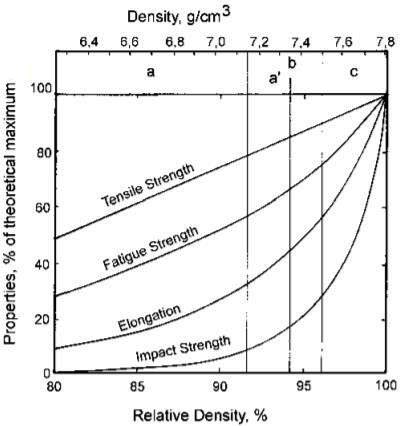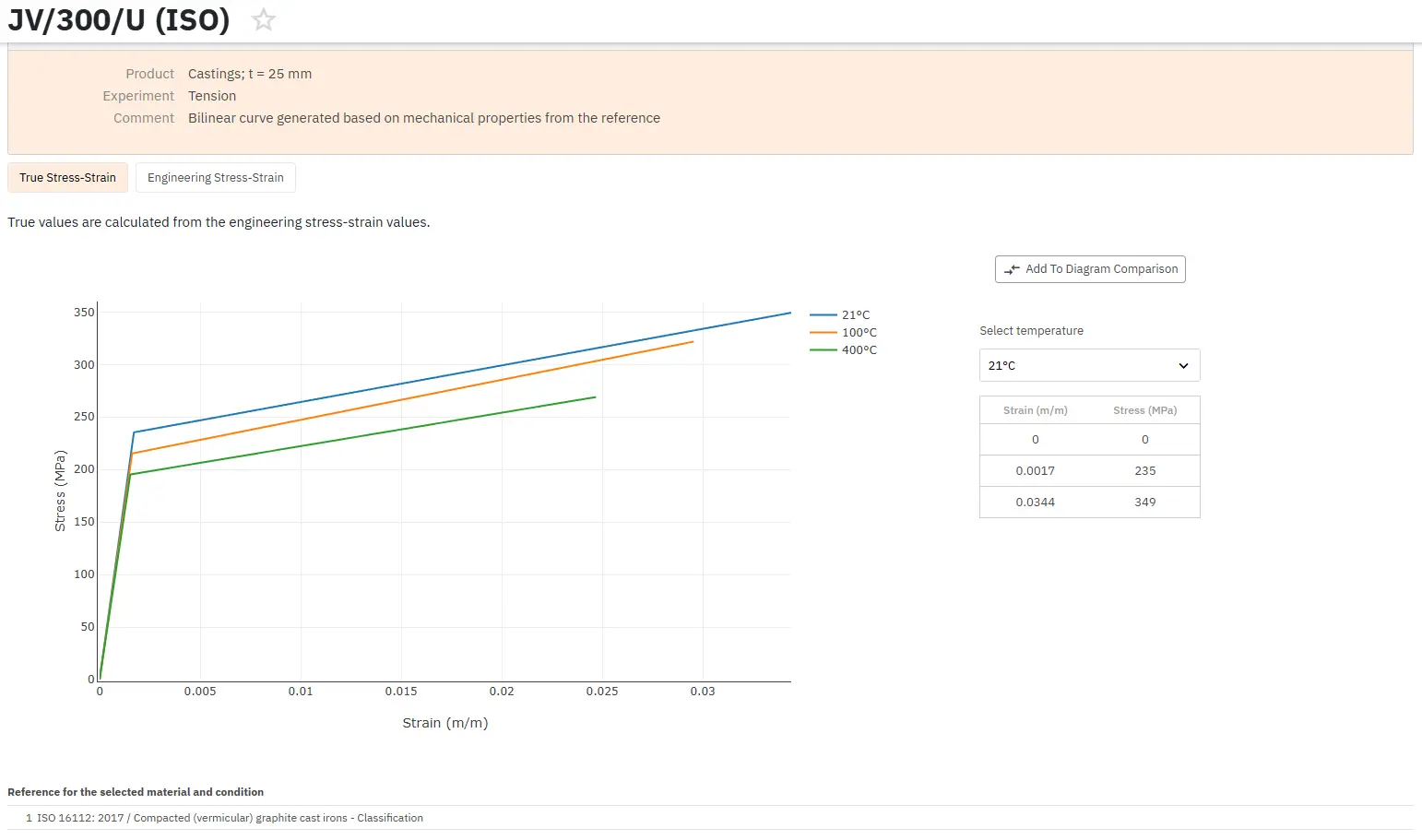Sintered Iron Based Materials: Advanced Powder Metallurgy for Automotive Applications
Abstract
Sintered iron-based materials produced through powder metallurgy (PM) techniques have become essential components in the automotive industry due to their complex shapes, near-net-shape manufacturing capabilities, and excellent balance of mechanical properties. Despite widespread application, porosity remains a critical challenge, potentially initiating crack propagation and compromising structural integrity. This study explores optimization strategies for Fe-Cu-Sn-Pb-MoS₂ antifriction materials, examining the effects of sintering conditions, alloying elements, and density on mechanical and tribological properties. Experimental results demonstrate that compositions containing 2.5% Sn and 2.5% Pb sintered at 900°C achieve optimal performance, with tensile strength of 205 MPa, impact energy of 12.46 J/cm², and superior wear resistance. These findings provide valuable insights for developing high-performance sintered materials for demanding automotive applications.
Introduction to Powder Metallurgy in Automotive Manufacturing
Powder metallurgy has revolutionized the automotive industry by enabling the production of complex-shaped components with near-final form dimensions. This manufacturing technique offers significant advantages including cost-effectiveness, design flexibility, and the ability to produce parts with precise tolerances. However, the inherent porosity in sintered materials presents challenges that must be addressed through careful alloy design and process optimization.
The automotive sector's demand for lightweight, high-strength components has driven extensive research into iron-based powder metallurgy alloys. These materials offer an attractive combination of ductility, tensile strength, manufacturability, and cost-effectiveness, making them ideal replacements for machined parts, castings, and forgings in numerous engineering applications.
Fundamental Challenges in Sintered Iron Materials
Porosity and Crack Propagation
The primary limitation of powder metallurgy components lies in their inherent porosity, which can serve as crack initiation sites and provide pathways for crack propagation throughout the material. This porosity directly affects the mechanical properties and long-term reliability of sintered components, particularly under cyclic loading conditions common in automotive applications.
Property Enhancement Strategies
Several approaches can improve the properties of sintered powder metallurgy alloys. These include reducing pore size, increasing material density, incorporating specific alloying elements, and implementing additional processing operations. Each strategy targets different aspects of the material's microstructure and performance characteristics.
Key Parameters Influencing Sintered Iron Properties
Critical Control Factors
Four primary parameters significantly influence the strength properties of iron-based sintered materials:
Density represents the most critical factor affecting physical properties, as both tensile strength and fatigue strength increase in approximately linear proportion to sintered density. Elongation and impact strength demonstrate exponential relationships with density, emphasizing the importance of achieving optimal compaction and sintering conditions.
Sintering Conditions including temperature, time, and atmosphere control the degree of particle bonding and microstructural development. Proper sintering parameters ensure adequate diffusion and neck formation between powder particles while minimizing grain growth and maintaining dimensional stability.
Alloying Elements provide specific property enhancements through solid solution strengthening, precipitation hardening, or specialized functions such as lubrication. The selection and proportion of alloying elements must balance performance requirements with processing considerations.
Heat-Treating Conditions can further optimize properties through controlled cooling rates, secondary heat treatments, or thermomechanical processing. These parameters require precise control to achieve consistent results and maintain dimensional stability.

Figure 1: Schematic diagram showing the increase of sintered properties with sintered density. The relationships between density and various mechanical properties for different processing routes are shown: a = compacting + sintering, a' = warm compacting, b = compacting + sintering + re-pressing + re-sintering, c = powder forging
Development of Iron-Based Antifriction Materials
Research Objectives and Methodology
Recent research by Teisanu, Sontea, Mangra, Ciupitu, and Tudor focused on developing advanced iron-based antifriction materials containing copper, tin, lead, and molybdenum disulfide (MoS₂) to meet specific working conditions. Their comprehensive study evaluated the effects of powder additions on mechanical characteristics and tribological behavior under various sintering conditions.
Experimental Materials and Preparation
The research utilized high-quality raw materials including iron powder produced by Ductil S.A. Buzau (DP 200 – HD), electrolytic copper powder, tin, lead, and molybdenum disulfide powder as a solid lubricant. Elemental powders were precisely weighed to required proportions and mixed in a spatial homogenization device for two hours to ensure uniform distribution.
The powder mixtures were compacted at 500 MPa pressure to produce 10 mm cylindrical specimens. Sintering was performed at three different temperatures (800°C, 850°C, and 900°C) for 50 minutes in a uniform heating furnace using dry hydrogen atmosphere at a flow rate of 1 l/min. Furnace cooling was achieved by switching off power while maintaining the same hydrogen flow rate.
Experimental Design and Compositions
The study examined multiple compositions and processing conditions to optimize material performance:
Table 1. Composition of powder mixtures
| Sample | Fe (%) | Cu (%) | Sn (%) | Pb (%) | MoS₂ (%) |
| A1 | 92.5 | 5.0 | 0 | 0 | 2.5 |
| A2 | 90.0 | 5.0 | 2.5 | 0 | 2.5 |
| A3 | 87.5 | 5.0 | 2.5 | 2.5 | 2.5 |
| A4 | 85.0 | 5.0 | 5.0 | 2.5 | 2.5 |
| A5 | 82.5 | 5.0 | 5.0 | 5.0 | 2.5 |
Table 2. Experimental conditions
| Parameter | Conditions |
| Compaction Pressure | 500 MPa |
| Sintering Temperature | 800°C, 850°C, 900°C |
| Sintering Time | 50 minutes |
| Atmosphere | Dry hydrogen |
| Flow Rate | 1 l/min |
| Cooling Method | Furnace cooling |
Mechanical and Tribological Performance Analysis
Testing Methods and Evaluation
The research employed comprehensive testing methodologies to evaluate both mechanical and tribological properties. Pin-on-disc tests were conducted to analyze coefficient of friction and wear rate, while mechanical testing assessed tensile strength, impact energy, and hardness. Microstructural analysis of wear surfaces provided insights into material behavior under tribological conditions.
Optimization Results and Performance Achievements
The experimental investigation revealed that the Fe-Cu-Sn-Pb-MoS₂ system with 2.5% Sn and 2.5% Pb additions, sintered at 900°C for 50 minutes, demonstrated superior performance characteristics. This optimized composition achieved remarkable mechanical properties including a tensile strength of 205 MPa, impact energy level of 12.46 J/cm², and hardness value of 139 VH5.
Tribological Performance
Under tribological testing conditions with a pxv value of 2.8 MPa·m/s, the optimized composition demonstrated exceptional performance with a coefficient of friction of approximately 0.1 and the lowest wear rate of 0.698×10⁻⁷ mm³/m. These results confirm the effectiveness of the alloying strategy and processing conditions in achieving superior antifriction properties.
Advanced Processing Techniques and Density Enhancement
Conventional vs. Advanced Processing Routes
The schematic relationship between processing methods and property enhancement demonstrates the effectiveness of various approaches to density improvement. Conventional compacting and sintering (route a) provides baseline properties, while warm compacting (route a') offers moderate improvements. More advanced techniques such as compacting, sintering, re-pressing, and re-sintering (route b) achieve significant property enhancements, with powder forging (route c) representing the most advanced processing approach.
Density-Property Relationships
The linear relationship between density and strength properties, combined with the exponential relationship for ductility and impact resistance, emphasizes the critical importance of achieving maximum practical density in sintered components. This understanding guides the selection of processing routes and optimization of manufacturing parameters.
Industrial Applications and Future Developments
Automotive Industry Applications
The excellent balance of properties achieved in optimized sintered iron materials makes them particularly suitable for automotive applications including engine components, transmission parts, and structural elements. The ability to produce complex geometries with precise tolerances, combined with superior mechanical and tribological properties, positions these materials as preferred solutions for demanding automotive applications.
Performance Benefits and Cost Advantages
The integration of advanced powder metallurgy techniques offers significant advantages over traditional manufacturing methods. These benefits include reduced material waste, elimination of secondary machining operations, improved surface finish, and the ability to incorporate multiple functions within a single component. The cost-effectiveness of powder metallurgy processing, combined with enhanced performance characteristics, makes these materials attractive for high-volume automotive production.
Conclusion
The development of advanced sintered iron-based materials represents a significant advancement in powder metallurgy technology, successfully addressing the traditional challenges of porosity and crack propagation while achieving exceptional mechanical and tribological properties. The optimized Fe-Cu-Sn-Pb-MoS₂ composition demonstrates the effectiveness of systematic alloy design and process optimization in developing high-performance materials for automotive applications.
The research findings provide valuable insights for future material development, emphasizing the importance of controlling density, sintering conditions, alloying elements, and heat-treating parameters to achieve optimal performance. These advances position sintered iron-based materials as essential components in the continuing evolution of automotive manufacturing technology.
Access Precise Properties of Cast Irons Now!
Total Materia Horizon contains property information for 11,000+ cast irons: composition, mechanical and physical properties, nonlinear properties and much more.

Get a FREE test account at Total Materia Horizon and join a community of over 500,000 users from more than 120 countries.